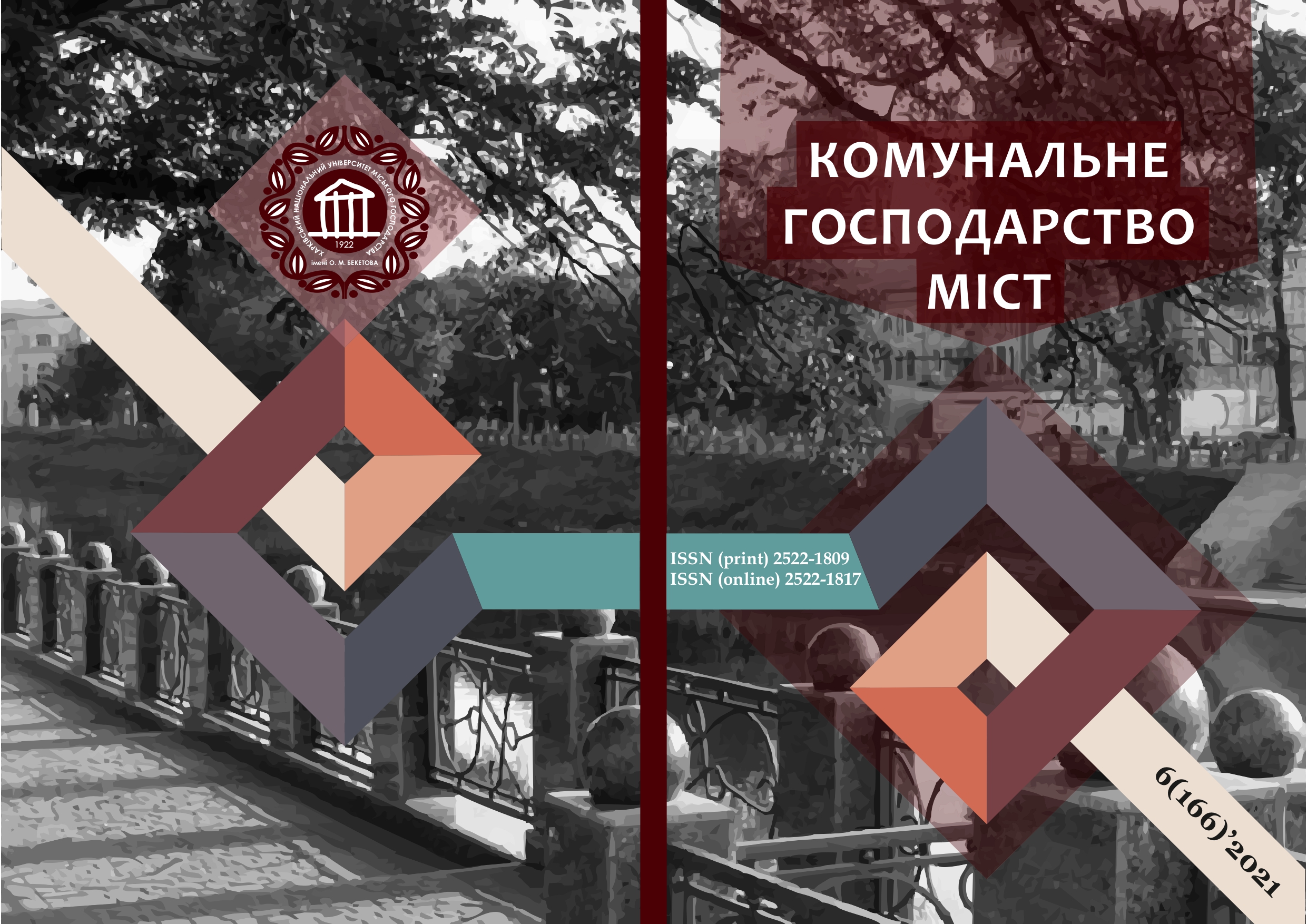ON IMPROVEMENT OF ENVIRONMENTAL INDICATORS OF THE KHARKIV MOTORWAY SECTION
Array
Keywords:
motor transport, traffic, pollution, atmosphere, solar panels, energy, noise, gases, noise protection screen.Abstract
Nowadays, on the territory of large cities, there is an increase in emissions of harmful substances into the atmosphere. The reasons for this are manifold: violation of design technological regimes, outdated equipment, an increase in the volume of road transport.
The constantly growing intensity of traffic flows is annually accompanied by an increase in the anthropogenic load on the population of modern cities. With the increase in the number of vehicles on the streets of large cities, the world community has identified noise as one of the main factors that worsen the standard of living of people. To assess the noise pollution of the environment by road transport, a typical area of the urban area in the Kharkiv micro district was chosen. The study consisted of four main stages: Stage I – assessment of the road condition and environmental situation in the courtyards of the micro district; Stage II – assessment of acoustic pollution of the main area; Stage III – assessment of the concentration of pollutants; Stage IV – measures to reduce the level of environmental hazard.
The study revealed that residential areas around Gagarin Avenue are prone to high noise levels and high concentrations of pollutants in the air. So, Gagarin Avenue is in the zone of acoustic discomfort (noise level 80 dBA), which exceeds the permissible noise level, while the degree of man-made impact on the environment during road operation is 1000 UAH / hour for every 100 people. Based on the results of calculations of the concentrations of pollutants from vehicles along Gagarin Avenue, it was found that for almost all substances their concentrations exceed the MPC by more than 3 times. Analysis of the experience of European countries in the use of noise protection screens with integrated solar panels allowed us to propose a model of noise protection barrier with integrated solar panels, which can be used to protect the urban environment from noise, sound waves and exhaust chemicals. gases from internal combustion engines. It has been established that the placement of a combined noise protection screen will reduce the noise level by about 8–15 dBA. Noise load maps were built in the main area before and after the implementation of the environmental measure. The results of the study will make it possible to introduce administrative and legislative measures to ensure regulatory noise levels for residential areas adjacent to highways and environmental safety when organizing traffic on the streets of large cities.
References
2. Chambers, James P. (2005). Noise Pollution. Advanced Air and Noise Pollution Control, 2, 441–452. DOI: https://doi.org/10.1007/978-1-59259-779-6_12
3. Gruden, D., Berg, W., Bormann, K. (2011). Traffic and Environment. Luxenburg, Springer.
4. Passchier-Vermeer, W., Passchier, W. (2000). Noise exposure and public health. Environmental health perspectives, 108 (suppl 1), 123–131. DOI: https://doi.org/10.1289/ehp.00108s1123
5. Singh, N., Davar, S. (2004). Noise pollution-sources, effects and control. Journal of Human Ecology, 16(3), 181–187. DOI: https://doi.org/10.1080/09709274.2004.11905735
6. Natsionalnyi Internet-portal Ukrainy. (2014). Derzhavni sanitarni pravyla okhorony atmosfernoho povitria naselenykh mists (vid zabrudnennia khimichnymy ta biolohichnymy rechovynamy). Kyiv. – URL: https://zakon.rada.gov.ua/rada/show/v0201282-97#Text (accessed 14.02.2021).
7. Inose, Kh., Khamada T. (1983). Upravleniye dorozhnym dvizheniyem. Moskva, Transport.
8. Berglund, B., Dietrich, T., Schwela, H. (2011). Guidelines for community noise. Geneva, World Health Organization.
9. Bocharov, A.A., Solovev, A.V. (2010). Vlyianye yntensyvnosty transportnoho potoka na obshchyi uroven akustycheskoho zahriaznenyia. Yzvestyia vuzov. Fyzyka, 53(9/3), 225–226.
10. Passchier-Vermeer, W., Passchier, W. (2000). Noise exposure and public health. Environmental health perspectives, 108 (suppl 1), 123–131. DOI: https://doi.org/10.1289/ehp.00108s1123
11. Directive 2002/49/EC of the European parliament and the Council of 25 June 2002 relating to the assessment and management of environmental noise (2002). Official Journal of the European Communities, L, 189(18.07).
12. Luzzi, S., Vassiliev, A. (2005). A comparison of noise mapping methods in Italian and Russian experiences. In: Forum Acusticum Budapest, 1051–1056.
13. Łowicki, D., Piotrowska, S. (2015). Monetary valuation of road noise. Residential property prices as an indicator of the acoustic climate quality. Ecological Indicators, 52, 472–479. DOI: https://doi.org/10.1016/j.ecolind.2015.01.002
14. Lynnyk I.E. (2017). Otsinka ta prohnozuvannia ekolohichnoho stanu dorozhnoho hospodarstva: monohrafiia. Kharkiv, KhNUMH im. O. M. Beketova.
15. Lezhneva, E., Vakulenko, K., Galkin, A. (2019). Assessing of traffic noise pollution of road transport in urban residential. Romanian Journal of Transport Infrastructure, 8 (1), 34–52. DOI: http://dx.doi.org/10.2478/rjti-2019-0002
16. Kombinovanyi shumozakhysnyi barier z intehrovanymy soniachnymy batareiamy: pat. Ukrainy №136314 / O.I. Lezhneva; opubl. 12.08.2019.
Downloads
Published
How to Cite
Issue
Section
License
The authors who publish in this collection agree with the following terms:
• The authors reserve the right to authorship of their work and give the magazine the right to first publish this work under the terms of license CC BY-NC-ND 4.0 (with the Designation of Authorship - Non-Commercial - Without Derivatives 4.0 International), which allows others to freely distribute the published work with a mandatory reference to the authors of the original work and the first publication of the work in this magazine.
• Authors have the right to make independent extra-exclusive work agreements in the form in which they were published by this magazine (for example, posting work in an electronic repository of an institution or publishing as part of a monograph), provided that the link to the first publication of the work in this journal is maintained. .
• Journal policy allows and encourages the publication of manuscripts on the Internet (for example, in institutions' repositories or on personal websites), both before the publication of this manuscript and during its editorial work, as it contributes to the emergence of productive scientific discussion and positively affects the efficiency and dynamics of the citation of the published work (see The Effect of Open Access).

